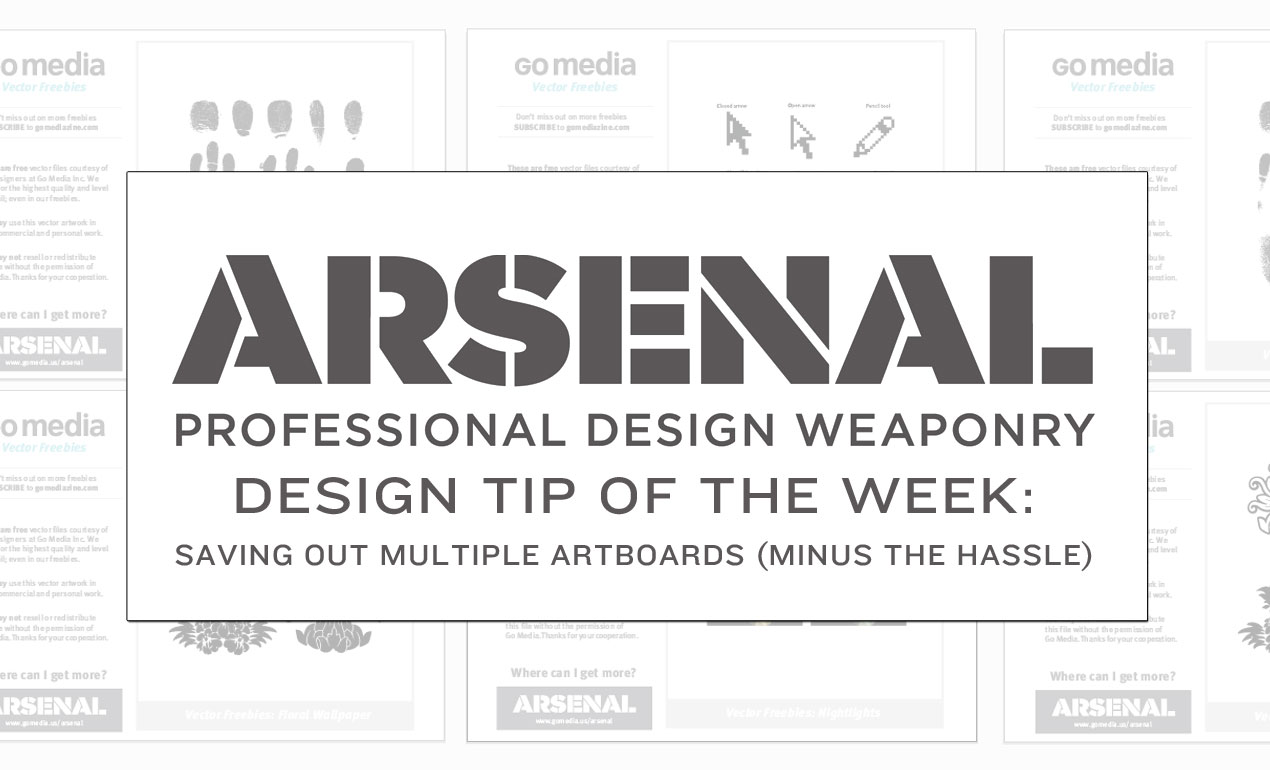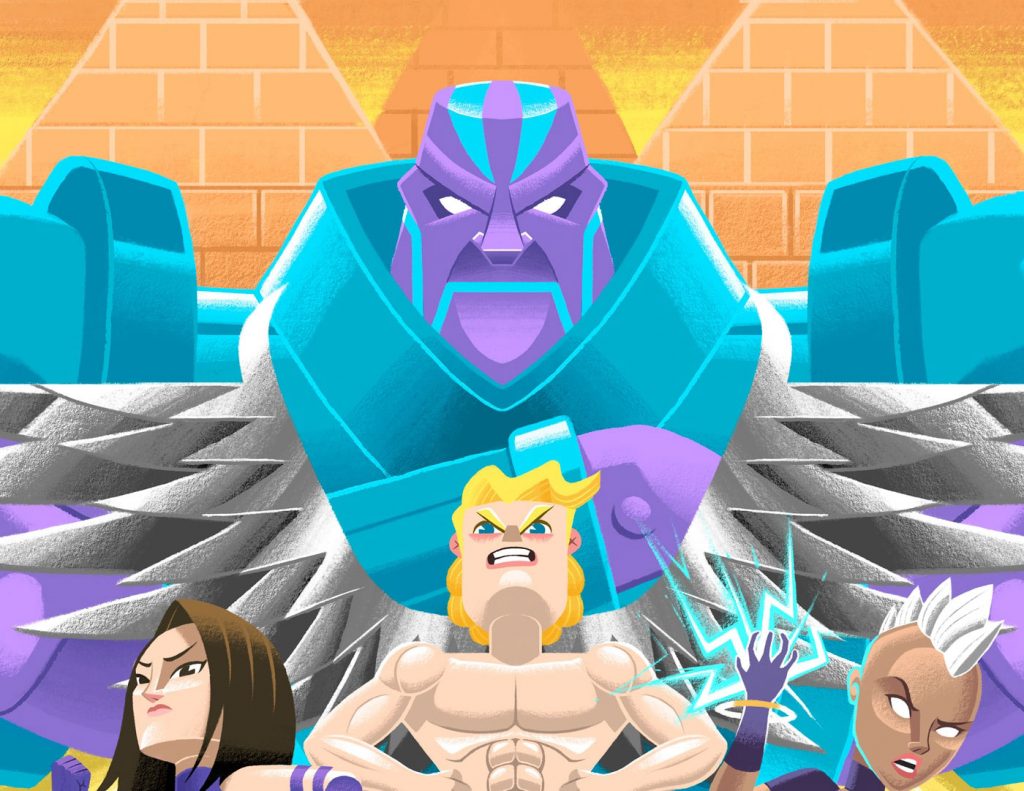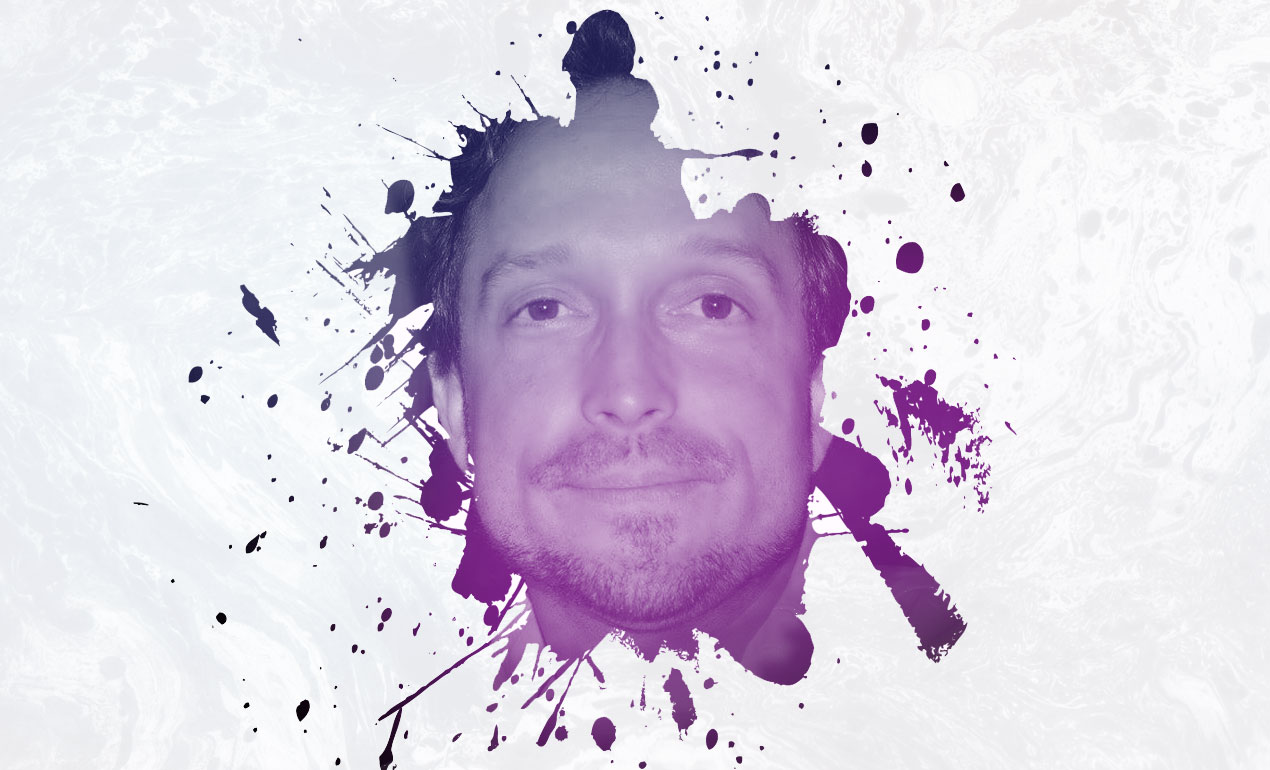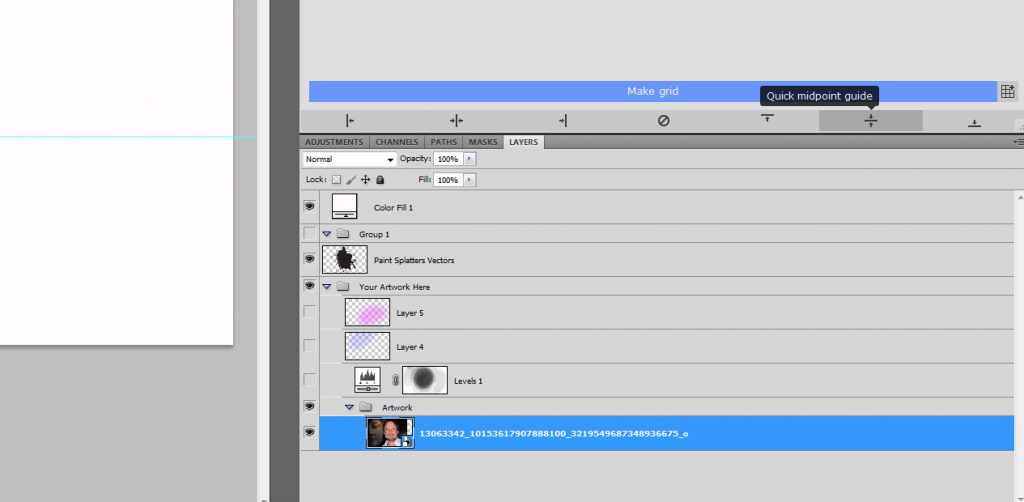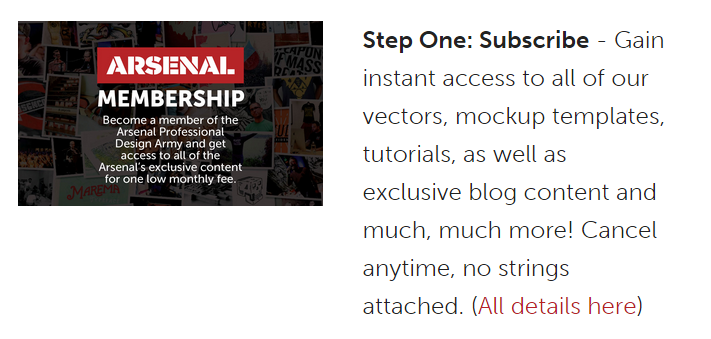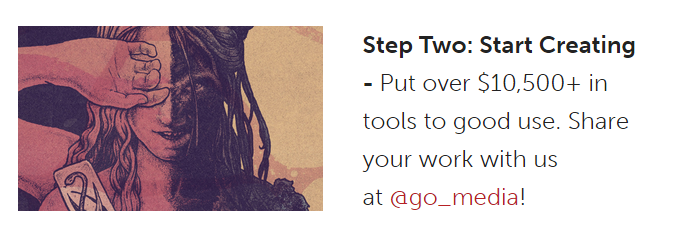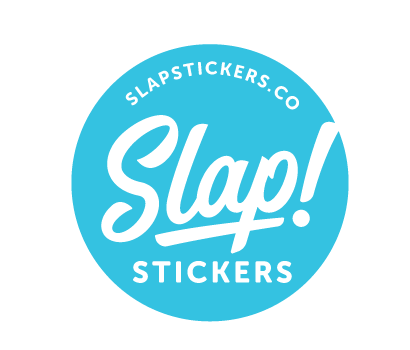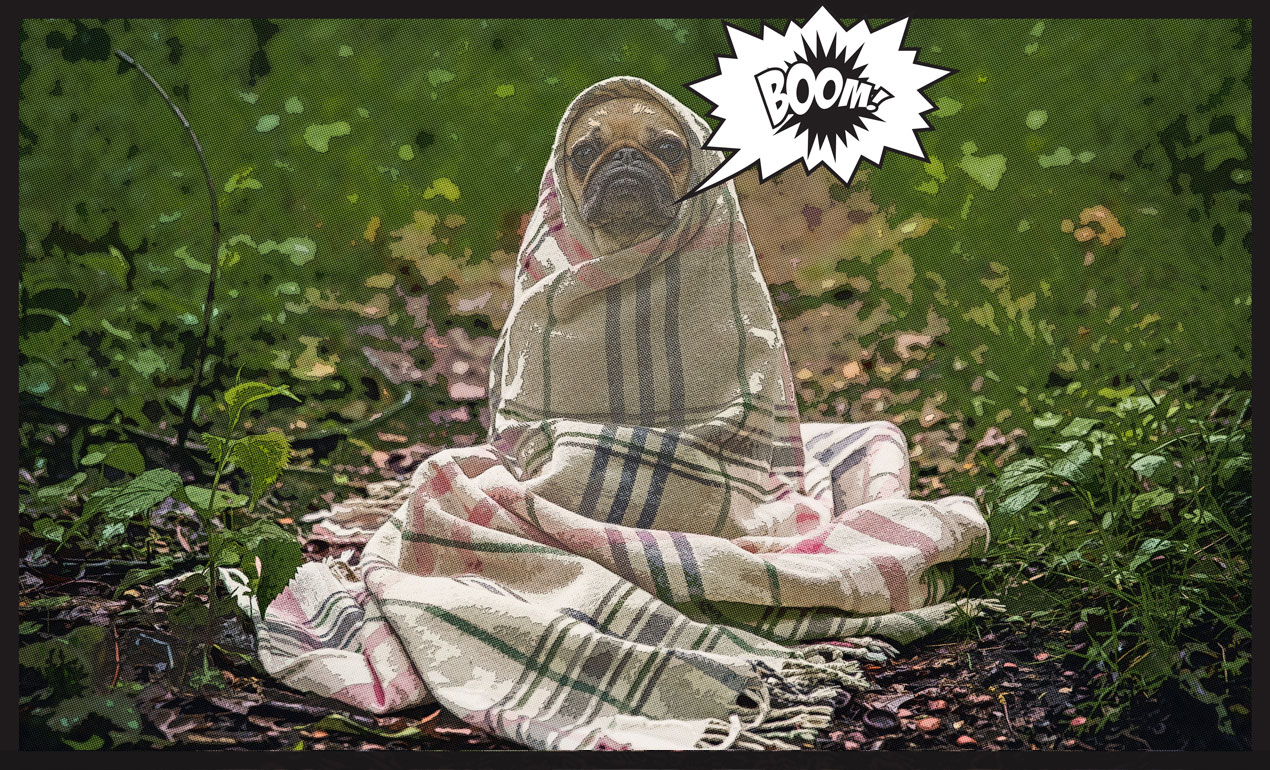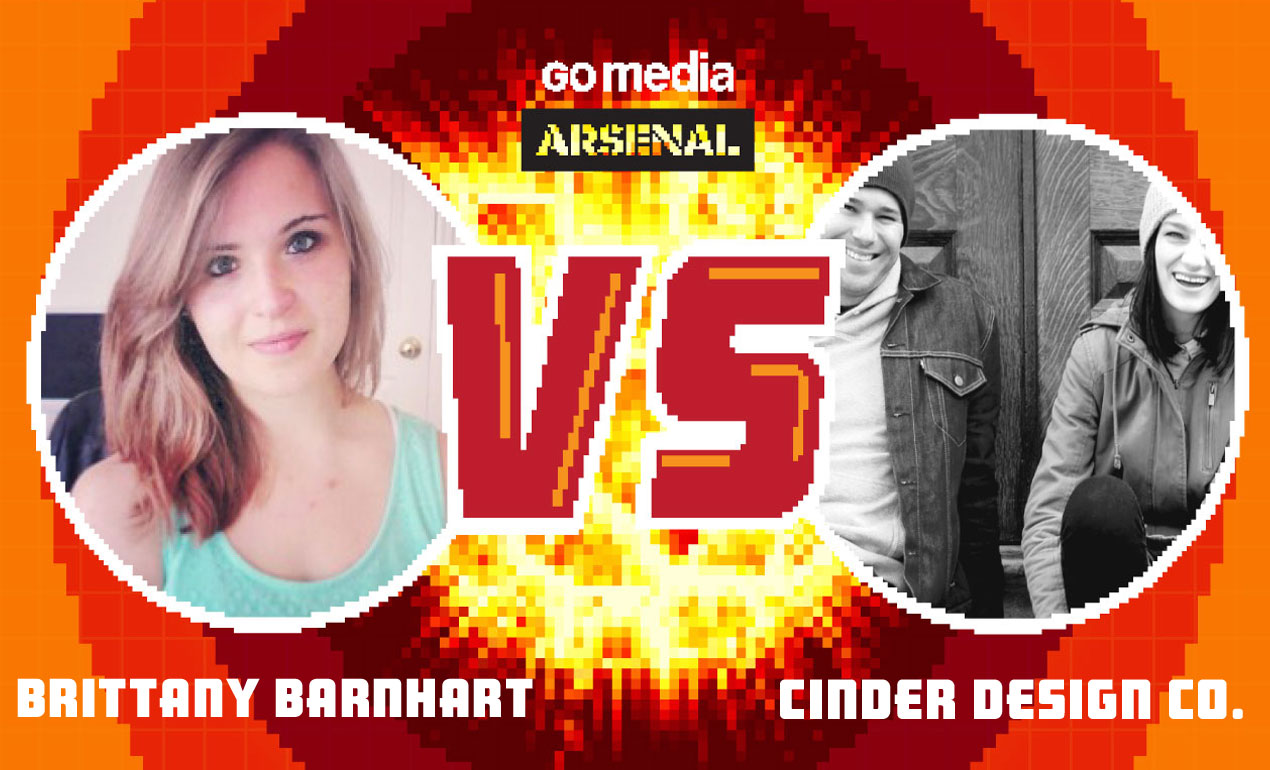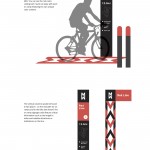Author Archives: Go Media
Dreading saving all of your artboards out as individual files upon project completion? We’re here to help. Read More ›
Today’ll we’ll be using Adobe Photoshop to create a seamless pattern. We’ll be using the Tattooesque Elements Vector Pack by Arsenal Artist Jeremy Child. Download it now and join us! Read More ›
Hey Arsenal Fans! It’s Heather and Bryan back with you again with an update about this week’s releases! Read More ›
There’s so much great work on the web, but it’s hard to take it all in. Today, we’re doing our best to appreciate just a small slice of it.
Here are some alternative movie posters posted by our talented counterparts. Click on each to be taken to the original page and learn more about the artists, including Maria Suarez Inclan, designer of the hero art. Enjoy!
Alternative Movie Poster Inspiration








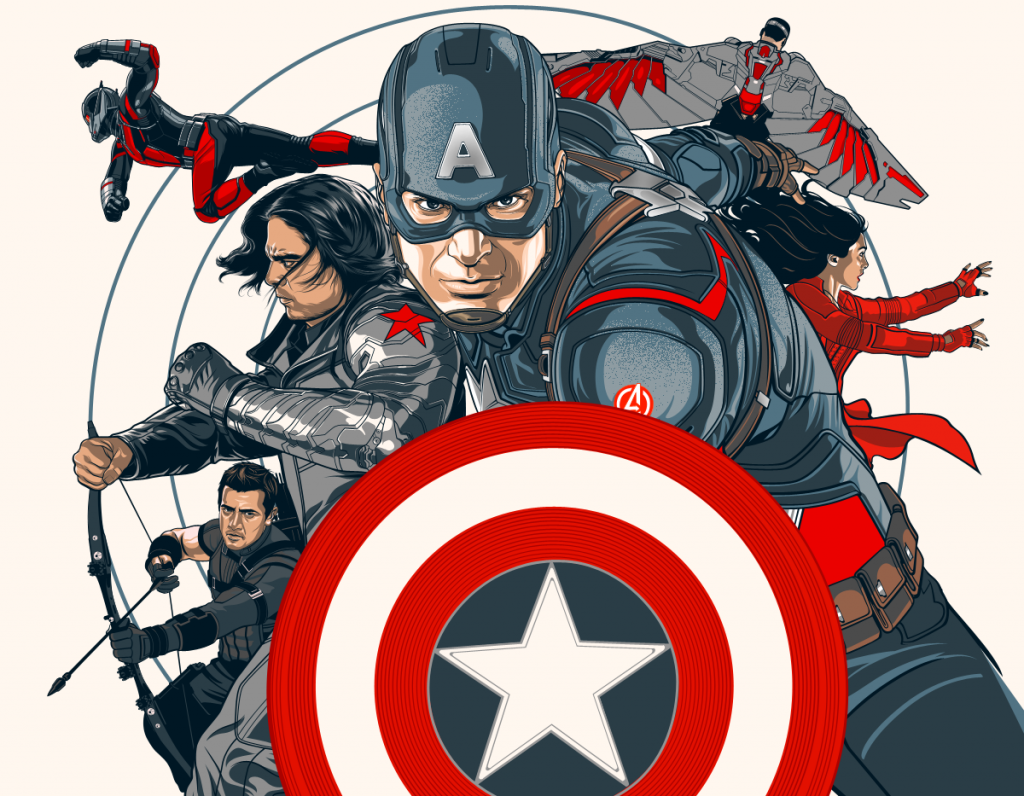
























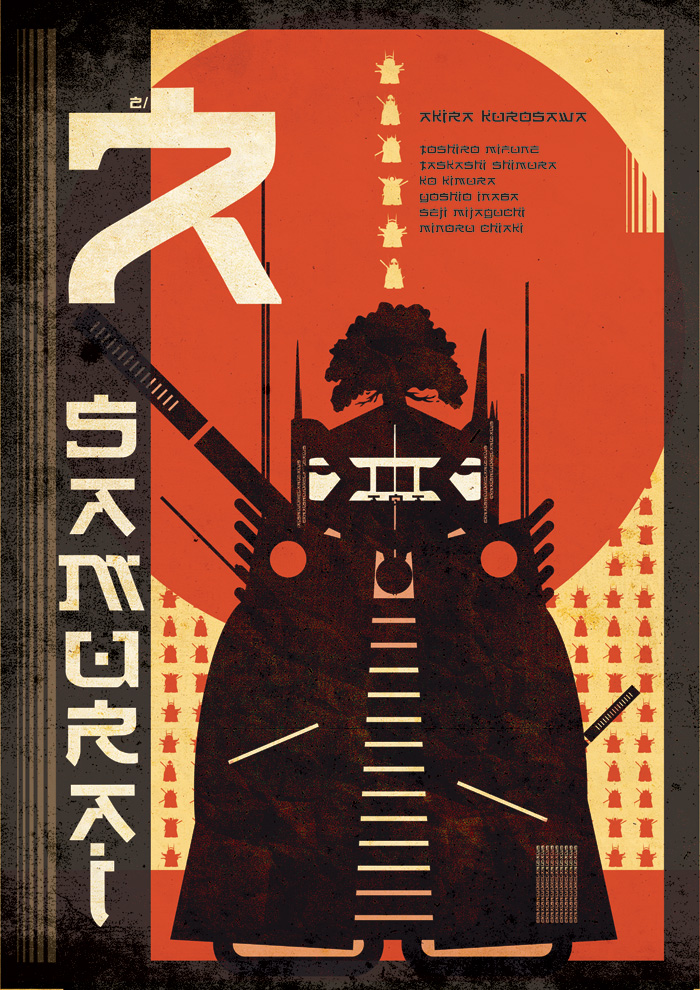



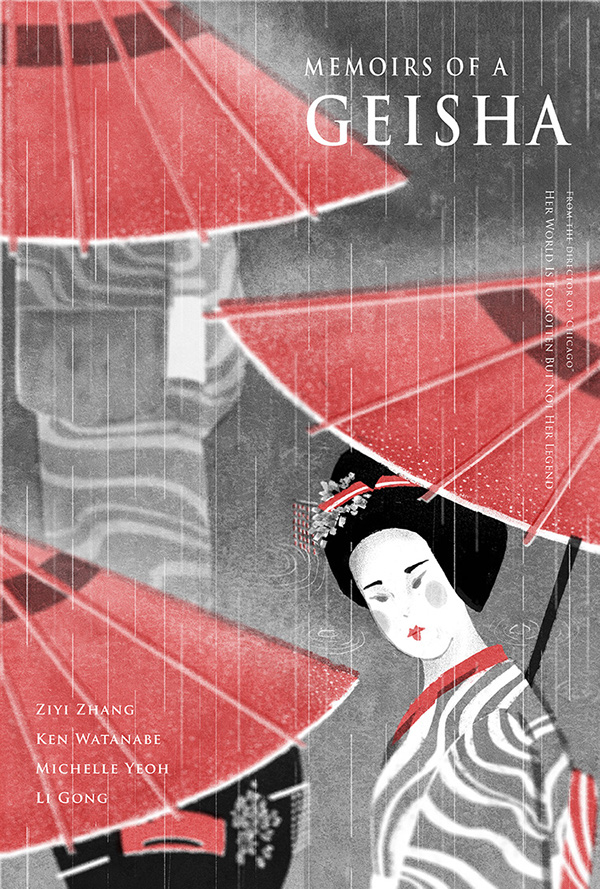


My niece and nephew are obsessed with Jib Jab! They spend hours creating silly videos with our family playing the role of ice skating stars, hula dancers and Justin Bieber.
Read More ›
Our next WMC Fest talk comes to us from Saint Louis Psychotherapist and Startup Therapie founder Wilfred Krenn. Read More ›
Today we’re creating this sweet paint splash effect using our Paint Splatters Vector Pack, recently released here on our Arsenal.
Here’s what you’ll need for today’s tutorial:
- Photoshop
- Download: Paint Splash Effect Files (contains a Paint Splatters Effect PSD & Paint Splash Effect Photoshop Action)
Let’s go!
1. Open up our Photoshop file (Paint Splatters Tutorial PSD).
2. Choose a dashing picture of your boss, place it where you see “Your Artwork Here” and make sure your photo is centered in the middle of your document. You may have to turn off some layers to ensure your photo is centered, so take a peek at how the document should look before we press play on our action:
3. Load the Paint Splash Action by Go Media’s Arsenal into PS (Window > Actions > Load Actions > navigate to the file)
4. Desaturate your photo, if
4. Press play on your new Photoshop Action and you’ll be all set!
Options:
Want to add more colors or change the color layers seen on the Action?
No problem. Just deselect the colors shown on the layer and add your own layer(s) above the color layers you see in the file. Choose a new color and a basic brush (I chose a soft basic brush size 500, opacity 25% – but play with this.) Simply brush your color across your boss’s beautiful face. When complete, set the color layer to “screen” or “divide.”
Have fun with it!
In other news:
If you love the vectors used in this pack, check out our Paint Splatters Vector Pack. We combined several of these vectors to achieve the large paint splatter effect the PS action affords you.
How do you attend the midwest’s premier design conference (ours…the amazing WMC Fest) for 50% off? Heather and Bryan are chatting about that, as well as what else is new at the Arsenal, in today’s update video. Read More ›
Located here in the heart of Cleveland, we can’t help but to be huge fans of the Cleveland Cavaliers. Sunday, June 19th was a momentous day for our entire city. The curse was indeed reversed and we became the champions we were (kind of) patiently waiting to be. We’re still high on life over here and the following designs have us feeling even more so.
Found on Behance and Dribbble, shout-out to our fellow designers for their incredible talent. Note: header art by: Joe Caione






















Today, the Arsenal is sitting down with musician and entreprenuer, Erika Durham, founder of multi-layered Cleveland business Canopy Collective. Read More ›
Which mockups do you want?
Arsenal customers, we want to hear from you! We feel like going on a mockup-template-making spree and need your suggestions so that we can pack our library with the best resources. Please take our quick survey and let us know what you want to see next.
WMC Fest Talk – Swappin’ Seats by Mike Jones
Our next exclusive Weapons of Mass Creation Fest talk comes to us from Creative South founder, Serve Studios owner and all-over loveable guy Mike Jones. Read More ›
Cleveland’s Kumar Arora is an entrepreneur, designer, marketer and investor behind many notable startups and brands. Read More ›
Borislav Mitkov’s got our attention. Freelance artist and Senior Concept Artist for Ubisoft Entertainment, Mitkov has experience working on such game design projects as “Star Wars Galaxies,” “Tom Clancy’s H.A.W.X” for XBox, “Prince of Persia: Trilogy” and “Assassin’s Creed: Rogue” for PS3. Read More ›
In this edition of Designer Face Off, we pit typographic illustrator and animator Joseph Alessio versus freelance illustrator Carlos Basabe. If you’re a fan of our design conference Weapons of Mass Creation Fest, you may recognize both Joseph and Carlos from last year’s art battle, Ink Wars.

Listen in as these friends talk shop, learn more about their commonalities as well as what about their backgrounds, in particular, have molded them into the unique creatives they are today.
More Joseph: Official Site | Twitter | Vimeo | LinkedIn | Dribbble | Instagram
Tumblr | Pinterest | Facebook | Google+
More Carlos: Official Site | Twitter | Facebook | Instagram | Dribbble
It’s Sticker Month!
If you’re an Arsenal Member or if you decide to subscribe before midnight on 5/31, you’re in luck!
We’re partnering with Rocky from Slap! Stickers, a monthly sticker subscription service. We’re friends with Rocky from the interwebs, but met him last month at Creative South. We saw his stickers in the flesh and knew we had to gift some to you, our members!

How do you get the glorious sticker pack?
Current subscribers…zip, zilch. Just bask in the glory of the Arsenal Membership and wait. We’ll be mailing out your stickers in the beginning of June. Please stay subscribed to make sure you get your stickers!
Not yet a member? Subscribe now!
Let’s Review:

Check out Slap! Stickers on Twitter | Facebook | Dribble | Tumblr | Instagram
Is your dog a super hero? Then follow along with our quick 10 step tutorial to turn the little guy or gal into a super pup! All you need is Photoshop and about 5 to 7 minutes – or, you can just download our free layer style and call it a day! Read More ›
JP Boneyard is a man who wears many hats. He’s a designer, front-end developer, printmaker & the visionary behind the National Poster Retrospecticus. Read More ›
Today, we’re sitting down with Cleveland photographer James Douglas Shields of James Douglas Studio to talk about dream clients, his one-of-a-kind style, his aversion to unbridled “photo-shopping,” and crediting your photographer.
Read More ›
Have you guys seen the trailer for Stefan Sagmeister’s The Happy Film?
We’ve been watching it on repeat since it premiered, even more giddily since learning Stefan is speaking at this year’s best creative conference, Weapons of Mass Creation Fest, this August!
Enjoy this trailer and make sure to purchase your tickets to see Stefan (with or without bunny suit – your guess) on the Ohio Theatre stage this summer. Smiles guaranteed.
Event: Weapons of Mass Creation Fest produced by Go Media
Dates: August 5, 6, 7, 2016
Location: Ohio Theatre, Playhouse Square, Cleveland, OH
Ticket and all information available now
WMC Tickets = Happiness Arsenal Members Special Discount Code
The Happy Film (festival trailer) from {group theory} on Vimeo.
Etsy is a beautiful playground of handmade accessories, jewelry, tools and vintage goods. Many makers have found incredible success selling their wares there. Read More ›
Enter to win unlimited design workshops at Go Media’s Weapons of Mass Creation Fest 7, the design conference coming to Cleveland this August 5 – 7! Read More ›
We were absolutely honored to have design legend Debbie Millman as a speaker at our design conference, Weapons of Mass Creation Fest 6.
Debbie is a writer, educator, artist, brand consultant, and host of the radio show Design Matters.
Treat yourself to her talk, “On Rejection.” On Rejection is a funny and heartbreaking tale of making it (or not) in New York. The presentation begins in early 2003 when a good friend sent Debbie Millman an email with a subject line that read: Begin drinking heavily before opening. The email contained a link that took her to a “blog,” the first-ever online forum about graphic design and branding. Suddenly she found herself reading an article that disparaged her entire career to date. This experience—in tandem with a number of historical rejections and setbacks—sent Millman into deep despair, and she seriously considered leaving the design profession altogether. In a series of poignant, revealing and sometimes hysterical anecdotes, Debbie will share her journey out of despair and offer insight on how the worst moments in your life can actually become the most profound and life affirming.
Debbie will be returning to this year’s Weapons of Mass Creation Fest! She’ll be bringing her podcast, Design Matters, to our vendor village on Saturday, August 6 from 1 to 3 pm.
More about Debbie:
Found on Official Site | Twitter | Facebook | Flickr | Google+ | LinkedIn
For the past twenty years, Debbie has been President of Sterling Brands, where she has worked on the redesign of over 200 global brands, including projects with P&G, Colgate, Nestle, Kraft and Pepsi. In 2014, she was named President, Chief Marketing Officer of the firm. In 2013, Debbie was named one of the most influential designers working today by GDUSA. Debbie is the founder and host of Design Matters, the world’s first podcast about design, which has garnered millions of downloads and a Cooper Hewitt National Design Award. In the 10 years since its inception, Millman has interviewed more than 250 design luminaries and cultural commentators, including Massimo Vignelli, Milton Glaser, Malcolm Gladwell, Dan Pink, Barbara Kruger, Seth Godin and more.
Debbie is the author of six books, including two collections of interviews that have extended the ethos and editorial vision of Design Matters to the printed page: How to Think Like a Great Graphic Designer and Brand Thinking and Other Noble Pursuits. Both books have been published in over 10 languages. In 2009 Debbie co-founded with Steven Heller the world’s first graduate program in branding at the School of Visual Arts in New York City. Now in its fifth year, the program has achieved international acclaim. The inaugural class wrote and designed the Rockport book Brand Bible: The Complete Guide to Building, Designing and Sustaining Brands and in 2013 the students created branding for the Museum of Modern Art’s retail program, Destination: New York.
Debbie’s written and visual essays have appeared in the New York Times, New York Magazine, Print Magazine, Design Observer, Fast Company, and more, and she is the author of two books
of illustrated essays. Her work has been exhibited at the Chicago Design Museum, Anderson University, School of Visual Arts, Long Island University and The Wolfsonion Museum. She has been artist-in-residence at Cranbrook University, Old Dominion University and Notre Dame University, and has conducted visual storytelling workshops at Academy of Art University in San Francisco, the University of Utah, Hartford University and the High School of Art and Design in New York. She has designed wrapping paper and beach towels for One Kings Lane, greeting cards for Mohawk and Card-To-Art, playing cards for DeckStarter and sketchbooks for Shutterstock.
Debbie is President Emeritus of AIGA, one of four women to hold the position in the organization’s 100-year history. She is also a past board member and treasurer of the New York Chapter. She is a frequent speaker on design and branding and has moderated Design Yatra in India, presented keynote lectures at Rotman School of Management, Princeton University, Michigan Modern, the Melbourne Writers Festival in Australia, Design Thinkers in Toronto, the Festival of Art and Design in Barcelona, and many more.
You guys are going to completely lose your minds over this year’s Weapons of Mass Creation Fest graphic art tee, created by the one and only Blake Stevenson – aka Jetpacks and Rollerskates. Read More ›
Today, we sit down with Rob Brink of Brink Design Co. You may recognize Rob’s best-selling PS and AI textures and brushes from sites like the Arsenal and Creative Market, where he is a top selling artist. Read More ›
Free Black Paper Textures
Here are eight free paper textures just for you! Read More ›
In this version of Designer Face Off, we pit illustrator/concept artist Katia Oloy against designer/art director James Hsu. What makes this face off twice as fun is that these two are not only remarkably talented, but also a husband and wife team. Read More ›
Hey Arsenal Fans! Today we’ll be creating a repeating pattern using Vector Set 25, just released on our Arsenal. Read More ›
Antonio Garcia: A WMC Fest Talk
We were absolutely honored to have designer Antonio Garcia as a speaker at our design conference, Weapons of Mass Creation Fest, this past summer. Read More ›
Our newest video tutorial release is a extraordinary journey through the thoughts of illustrator Katia Oloy, Senior Concept Artist at Scopely and former art direction team member for Disney’s It’s a Small World, the animated series. Read More ›
We were lucky enough to grab a couple moments with Cleveland’s hottest underground artist, Ben Sakai, last week. Read More ›
How to Invoice for Graphic Design Work (the Go Media Way)
Invoicing for graphic design work is just one of the many processes we have to sort out when starting our own business. Read More ›
Go Media is slammed with work and in immediate need of a junior designer to help with our current work load. This is an entry-level position with entry level pay. This is also a temporary position. I can guarantee three months of work. So, please don’t quit your job for this opportunity. But if you are a recent graduate looking to build up your portfolio and experience, this may be an ideal opportunity for you.
Please email a cover letter, resume and a link to an online portfolio to [email protected]. Please note that we get a high volume of emails regarding jobs and internship opportunities at Go Media. If we don’t respond right away, please bear with us.
Once we receive your application, we will review it and if we are interested, we will be in contact. Good luck and we look forward to hearing from you.
Graphic Design Challenges: Designer Face Off
In this version of Designer Face Off, we pit designer Brittany Barnhart of Just Curious Co. versus Michael Rivette and Christina Sharp of Cinder Design Co. Read More ›
How to Make Watercolor Brushes in Illustrator
If you’re like us, you’ve got art laying all around the studio just begging to be used in unique and wonderful ways.
Today, we’ll show you how to transform that art – specifically our watercolors – into AI brushes. Follow along to create your own and make sure to pick up our brand new Watercolor Illustrator Brush Pack while you’re at it!
Watercolor Vector Brushes for AI
What you’ll need:
- Adobe Illustrator
- watercolor, paint brush strokes or the like
And away we go!
Step 1
File > Place your watercolor into Adobe Illustrator
Step 2
Next, head to
Object > Live Trace > Tracing Options
Step 3
Under these options, choose Color 16 from the drop-down, then “Set Default”
Step 4
Ensuring your watercolor is selected, choose “Live Trace” from the top menu.
Step 5
Then, “Expand”
Step 6
Click on the white area surrounding your watercolor art.
Step 7
Next, Select > Same Fill and Stroke. Press Delete to delete this white area.
Step 8
Make sure your brushes palette is open.
Step 9
With your art selected, head to the small arrow to the right of the palette. From the drop-down, choose “New Brush.”
Step 10
Choose New Art Brush, OK
Step 11
Make sure the following are selected:
- Scale Proportionately
- –> Right Direction Arrow
- Flip Along
- Flip Across
Step 12
Repeat this process for all of your art until you’re finished with your pack.
Step 13
Once you’ve completed your pack, shift and select all of the brushes. From the drop-down, choose “Save Brush Library,” saving it where you’d like. (AI will automatically place your file in the Adobe Brush folder for convenience.)
All done! To access your new brushes:
– Go to Window Brush Libraries Other Library and then locate the brush library you want to install.
– On your brush library panel go to the top right menu and check “Persistent,” and your brush library should be accessible every time you open Illustrator.
Congratulations! You’ve created your own vector art brushes. Make sure to share your results with us in the comments section below and purchase our Watercolor Vector Brush Set!
Hey Arsenal Fans! We’ve got some great new releases for you this week! Check out our video for a quick debrief, including what you’ll get if you subscribe to our membership by Friday! Read More ›
Common Mistakes Graphic Designers Make
It’s Bill from Go Media again with your favorite 30 Day Design Firm Makeover Course. Last time we talked about making money. In today’s lesson we’re going to talk about some common mistakes we find ourselves making as we grow our design firm.
Lesson 5: Common Mistakes
Let us say that mistakes themselves aren’t bad. We only ever realize we made a mistake when we know what we should have done instead. And sometimes the only way to know is to try something and fail. Failure is one of the quickest ways to learning how to do something. Now that we understand that mistakes and failures are keys to evolving as a business-minded designer, let’s move onto some common mistakes.
Undercharging
We’ve seen it time and time again in our industry. Designers always struggle trying to find their ideal rates. We’ve made some amazing discoveries when we’ve accidentally added a zero to the end of an invoice and the client paid it in full with no questions asked. We were left baffled and realized we could have been charging this much all along.
This is one of the most common mistakes, but it’s a mistake that is easily correctable and every firm goes through it.
Lack of Education
One of the mistakes designers make is not investing into their business education. In one of the bonus videos, Go Media president William Beachy talks about wishing he would have invested more time in learning about business. We tend to become experts at design fundamentals, Adobe products, web standards and technologies, and even fashion trends! This is all fine, but so many of us avoid fundamental business lessons like supply and demand, market research, business ethics and legalities, etc. If getting an MBA isn’t for you, pick up a few books on business. A couple we really recommend is Book Yourself Solid and Good to Great. We also recommend forming relationships with business mentors.
Not Being Aware of your Numbers
We creative people would want nothing more than to spend all day in design software cranking out beautiful designs. However, as painful as it can be, you need to be aware of your cash flow in and out. You need to be aware of how much time you’re spending on projects. You need to pay attention to your bank statements, your profit and loss, your metrics dashboards.
That’s all for this week. If you’re looking for more advice on increasing revenue, we’ve got a 10 minute video on pricing and billing and a How to Make More Money bonus PDF in our Drawn to Business Plus Package.
If you have any specific questions about what we’ve covered so far, just ask.
Hello, hope you’re doing well! Last time we talked about promoting yourself and generating traffic and leads. In today’s lesson we’re going to talk about converting all that into sales! Read More ›
How to Promote Yourself as a Graphic Designer
Hello! We hope you are receiving valuable lessons and getting ideas on how to improve your design firm. Read More ›
This week on the Arsenal, we’re geeking over Michael Bierut, some incredibly dynamic textures and an EDM poster tutorial by our favorite frenchman. Read More ›
Michael Bierut: A WMC Fest Talk
We were absolutely honored to have design legend Michael Bierut as a speaker at our design conference, Weapons of Mass Creation Fest, this past summer. Read More ›
Hello, it’s Bill from Go Media again with our 30 Day Design Firm Makeover Course. I am really excited for today’s lesson! Read More ›
Hey Arsenal Subscribers! We’d like to welcome you to our 30 Day Design Firm Makeover Course. Over the next month and a half you will receive valuable lessons and quick tips on making some positive changes in your design company. Read More ›
Graphic Design Portfolio Tips
An outstanding online portfolio is a must for any creative. Believe us, it’s true. When popping open emails from those applying for graphic design positions here at Cleveland design studio Go Media, we’re often shocked at the number of folks who do not have an online portfolio, or have one that’s outdated or terribly underwhelming. Today, let’s all make a commitment to ourselves. It’s time to up our game because it’s so worth the time and energy. After all, it just may land you the job of your dreams, the promotion you’re deserving of, or the recognition you have been desiring.
Quick Tips: Do’s and Don’ts >
Do’s:
- Illustrate your strengths clearly and cleanly.
- Show versatility if you’re capable.
- Use minimal colors and fonts. Keep it simple!
- Maintain your brand across all platforms.
- When using case studies, start from the beginning and take us through the journey with you.
- Also, give us a healthy dose of successes and an insider’s guide to the decisions you made along the way.
- Tell us how you solved the problem for your client and wrap it up in a pretty bow!
- When using testimonials, place them alongside relevant work (instead of on a separate page).
- On your about page, show your face! We want to see who we’re dealing with!
- Include a working email address on the site. We’ll want to contact you.
- Do consider adding a contact form.
- Keep your portfolio updated with new projects.
Don’ts:
- Don’t include any fluff.
- Don’t stretch the truth. Instead, show us only where you really shine.
- Don’t allow your site design to distract from your work.
- When using case studies, don’t hesitate to give insights to challenges along the way.
- On your about page, don’t be afraid to be a little quirky. (If you’re quirky…)
- Don’t write a novel on your about page.
- Don’t just throw a bunch of testimonials on a testimonials page.
- Don’t forget to regularly check all of your links.
Inspiring Portfolios:
- Go Media
- Andy J. Miller
- Jean Jullien
- Jack Hughes Illustration
- Owen Gildersleeve
- Rose Blake
- Janine Rewell
- Olly Moss
- Kyle Platts
- Matt Luckhurst
- Yeni Kim
- Timothy Goodman
- James Victore
- Jessica Hische
- Colin Tierney
- Becca Clason
- Andrew Colin Beck
- Danielle Evans
- Jon Contino
- Justin Mezzell
- Ryan Hamrick
- Promise Tangeman
- OkPants
- Dan Cassaro
- Daniel Mackey
- Simon Pan
- Sam Dallyn
- Charlotte Tang
- Ian Barnard
How to Build a Brand
What is your brand? Who is your brand? And why should we care? Developing a brand is more than just your logo. A brand represents everything you are as a company. Everything that you say and do shows your prospective customer who you are. It’s your “dress,” the way you talk, your slogan, your signage, your messaging, how clean your offices are, company uniforms, your collateral materials and so much more.
To build a strong brand presence, it’s important that you ask yourself three very important questions –
What is my positioning statement? (Where is my space in all of this clutter? What does my company offer that no one else does? Why are we special?)
What is my messaging platform? (Why should anyone care? What’s in it for my customers?)
What’s my brand persona? (Who is my target customer? Who is my company?)
Close your eyes for a minute. If you had to talk about your company as a real person. Who would you see? Try to imagine your company as a movie star. Is your company Brad Pitt or Morgan Freeman? Someone young and hip? Old and stodgy? Middle aged and reliable? What about your customer? How do they communicate? How does your target customer like his coffee? You should live and breathe your brand persona so much that that answers to questions about your brand should roll off of your tongue. “Duh!” You should be telling me, “We’re an almond latte kind of company!” Or maybe you’re a tea company, or a pop company. We can’t answer that for you–only you can. This is the first question of many you should ask yourself about your brand persona.
Once you figured out your brand personality, it’s time to start working on the visual components of your brand. When creating your brand, it’s important to take its various components into consideration: logotype (the word), mark (commonly referred to as a ‘logo’,) and color scheme.
- The logotype is a distinct font that represents your company. It should be meaningful to your brand. Bold, curious, flirty, simple–fonts speak visually to your prospective consumer and should be an extension of your brand persona.
- The mark, or the symbol, supplements the logotype. If your brand is edgy, be edgy! If your brand is laced up, be more formal. However, always remember that your mark should (not too be too cheesey) help you make your mark on all things visual. It should work well in black and white, not just in color. Additionally, you should be able to use this mark on any design work–print or online. Think about how it will be displayed on social media, on eblasts, on brochures, on t-shirts, or on uniforms… just to name a few visual outlets.
- The color scheme. It should use one or two primary colors, one accent color, or colors of differing value. Creating a strong brand color scheme will facilitate your brand’s flexibility across print and online, and it will also help make your brand visually appealing.
Once you figured out your brand personality, it’s time to start working on the visual components of your brand. This begins with your logo.

Putting in the resources to craft up a quality logo cannot be underrated. Also, we’re going to get on our soapbox right now and tell you that for the love of all that is good in this world, please don’t think that once you have created a logo, you are done. So many brands focus on just this one part of their visual identity. While the logo is vital to a brand’s identity, it isn’t the only visual piece of the puzzle that helps set you apart from your competitors. Your logo, my friend, is just the beginning of your visual brand identity.
Let’s say, for example, you want to create a brochure so that you can tell the world how amazing your company is. Where should your logo appear on the brochure? What kind of header will you use? What kind of typeface will follow? What size font do you plan to use? What kind of photography or imagery will be included? What’s your white space/copy ratio? What kind of voice are you using in the copy? Does the piece feel simple or intricate, casual or fussy? You see, it’s not as easy as you might think to release a brochure. Just like your logo, this brochure should exemplify who you are as a brand–it’s an extension of who you are. Your customers should immediately see and feel the synergy between your logo, your chosen imagery, your words, and YOU. This thought process holds true for every single piece of collateral that you release…no matter how big or how small.

It seems daunting to live up to your brand persona in each and every piece you release. That’s probably why, time and time again, we see a brand that looks and feels different on various pieces of collateral. Maybe you’re using different designers or firms or heck!, maybe an in-house designer is adding his or her flair to your logo, or whatever piece you’re currently creating. Creating a Brand Standards Guide can help keep things consistent. On the Brand Standards Guide, include an example of the mark and logotype. Include fonts. Include colors in RGB, CMYK and Pantone. Include best practices such as uses and spacing. And finally, include example designs. Sometimes, we even see sample copy on a Brand Standards Guide. A solid Brand Standards Guide helps ensure that no matter who is helping push your brand, you’re all pushing the same brand–not spin offs of one another
In no way are we saying that each piece has to look identical. We’re a creative firm–we’d never tell you to go for visual boredom, or ask you to turn into a boring machine spitting out identical pieces, one after the other. Instead, we’re saying that visual consistency is vital to your brand. By following these tips, your customers will create a stronger connection with your brand that they can trust. Trust = repeat business, which, at the end of the day, is what we all want.
Questions? Get in touch! We’d love to help you no matter what stage of the brand process you are in. We can’t get enough!
This Week on the Arsenal…
We’re so excited about this week’s releases that we’re shouting from the rooftops of Go Media’s headquarters!
Read More ›
Insights with an Art Director
Chris Comella, Go Media’s Art Director, has come a long way with the company. A member of the staff for eight of its 13 years in existence, he has seen the company grow from a small crew of illustrators elbowing one another in a small 1 bedroom condo to a million dollar business thriving in the CLE.
We sat down with Chris to talk about his role and advice to young designers hoping to follow a similar path.
Heather: What are the steps that led up to your current position as Art Director?
Chris: At Go Media, there has never really been a rigid hierarchy. So, my role more organically came about… I wasn’t vying for that next ‘title rung’ in the creative ladder so to speak, I just over time started to work on and care about more than just the daily, bread and butter client work. Things like evolving our creative process was a big picture item I began focusing on.
In terms of little picture, day to day things – It’s important to learn how to better understand and guide your clients, guide your designer teammates to produce the best work they can, and really take ownership and pride of the work that’s being produced on a daily basis. These are all things I find myself mixing up in on a daily basis. Luckily for me, my team is really great and they help make the job really easy.
Heather: In your opinion, what are qualities that make up a great art director?
Chris: There are the tangible things that come to mind, such as having a good foundation of experience to draw from, being comfortable communicating ideas to both clients and the design team, having a strong vision for the work itself and how to go about executing that work. On a daily basis, those are the things that will help make you an effective member of the team.
But I also can’t help but reflect on some of the intangible qualities of our team which I’ve come to be proud of. Something as simple as our collective personality, or common way of thinking is something that really gives us our edge. At the risk of sounding like a cheese ball, I’ll say that one of our distinguishing traits is that we truly care about the work. Nothing is more of a bummer to me when people aren’t pushing their work, or put another way, aren’t treating the work in front of them as an opportunity. The art director is in a good position to really instill these ‘character’ traits because in a lot of ways, they set the tone of the team. And when you make a point to really show an above and beyond way of going about your work, that becomes a benchmark for the team. I can tell you right now, when someone is excited about the work they’re doing, it’s infectious and it’s something that invites the people around you to get in on it. I think those intangibles are something an art director is uniquely suited to observe and guide. Not only instilling those traits directly, but by observing through others what’s happening and discovering what they all combine to create.

Heather: The design team here at Go Media is incredibly hard working and cohesive. You really gel and it shows in your work. What do you do on a daily basis to ensure that this team functions so flawlessly?
Chris: Good habits and a rhythm start to form when you have a team humming along on all cylinders. For our design team, you can credit that to two things: The design process itself, and the individuals on the team. The process provides a sense of structure and stability, which is a wonderful thing to have when anything from a mascot / character illustration to a gas station rebranding project comes in. The more you work together, the more you’re going to understand the ins and outs of how the process benefits the individuals, and vice versa. Over time you begin to tailor how you work, and can adapt to a variety of different situations.
Heather: I really love the way you articulate your concepts to clients, as well as communicate to the other designers. Do you have any advice for newbie designers as to how you developed your communication skills with clients?
Chris: I’ve been in so many meetings, and what makes me antsy is seeing the slow motion, eyes-squinted, ‘yes’ nod from the client… That’s the, “I’m trying to understand you, but there’s something missing here” face. I always try to look out for those little cues. At Go Media, we try to make everything as clear and logical as possible. The goal isn’t chat, close the curtain, perform design magic, and reveal your end product. Nor is it to ramp up the designer-speak to try and overwhelm a client with jargon, and over-wrought rationale. Instead, our job is to shed light on how to accomplish seemingly complicated or abstract problems in a creative way.
For young designers, there might be some inclination to go overboard on the designer-speak. While you want to show someone you’re really serious about what you do, you want to be sure you’re making an effort to be clear and concise. And when it comes to learning how best to communicate, it’s all about repetition. To get comfortable, you’re going to have to do what it takes – Be prepared for calls, and put yourself out there. The more times you’re put in that position, the more natural it will feel. When you’re in a meeting, take note of how people are talking to each other – If you notice someone is doing something particularly well, make a note of it and try it yourself the next chance you get. The same works for the opposite. If you don’t like a way someone is going about something, make sure you avoid doing it yourself. You can learn a lot by simply becoming a sponge when you’re around talented, experienced people.
Heather: You are responsible for some of Go Media’s most successful and profitable designs. Can you name 1 of your favorites?
Chris: Man, I have a lot of projects that I’m super proud of, but one that pops into my mind is the Midway – A proposed cycling network for the city of Cleveland. The very first meeting was years ago at this point, and it was just a super exciting idea. Although it still has a long way to go, I was lucky enough to be there to help name it, design the identity, and help launch the awareness campaign. Below are some behind the scenes images including logo, wayfinding, and outreach graphics that were created.
Heather: Any advice for a designer that strives to be in your shoes one day?
Chris: One thing that comes to mind is when you get a project that isn’t in your comfort zone and initially feel you might not be the best for it, I would challenge you to seek out an aspect of it that you can sink your teeth into. I personally had felt for a long time that, because I was interested in exploring all different types of projects, that it would lead to a disjointed body of work, or even a vague reflection of the designer I am. But over time I’ve come to realize that a passion for a wide variety of work (illustration, identity systems, video, mascot, etc.) only serves to broaden my range. Not only that, but it helps broaden the topics I’m genuinely interested in. Using design as a gateway to new interests in life, generally, helps you grow as a person. And I gotta say, it was super vindicating when at this previous year’s WMC fest Michael Bierut made a point to drop this knowledge – “I’ve learned to be interested in as many things as possible…The work I have been really proud of is all stuff that I was really interested in. If you can be interested in as many things as possible, it will up your percentage. ”
If you can challenge yourself to truly enjoy at least one aspect of each project that lands on your desk, you’ll find that the things you learn will directly apply to the jobs you fall in love with. Changing your outlook will make your work so much better. I really do believe that.

Want to work with Chris and the Go Media team on your next project? Get in touch.

